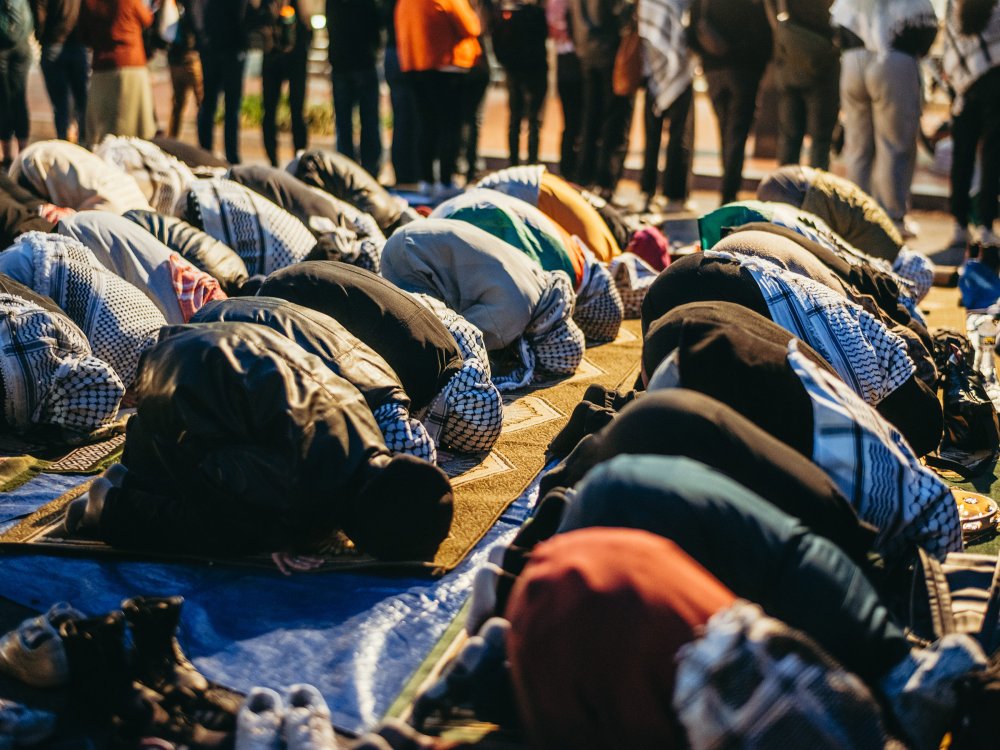




























American campuses have not looked like this for more than 50 years, and never for the reasons they do now. The foreign war that students protested in the 1960s and ’70s was one that, even amid draft deferments, threatened their own lives. What has stirred students to risk their safety, enrollment, and future careers on hundreds of campuses this spring is the deaths of others–the 34,000 Palestinians killed in the Gaza Strip since Israel launched its retaliation for the that killed 1,200 and .
The protesters’ point of reference is the 1980s campaign for from apartheid South Africa. In their campaign, aimed at what they see as financial complicity in Israel’s actions, the activists—many swathed in kaffiyehs and living in tents, if they haven’t already been forced out by their universities—embody a generational divide previously visible only in polling: young Americans who have known Israel only during its occupation of the West Bank and blockade of Gaza are to the Palestinian cause than are those old enough to remember it first fighting, in the shadow of the Holocaust, to create a safe place for the world’s Jews.
This is the conflict that has thrust America’s colleges back into position as the crucible in which the nation works out its moral questions. Student journalists have been the ones to document the resulting conflagration—especially on campuses that barred the professional press from bearing witness. TIME reached out to student photojournalists from across the country to tell this story. —Karl Vick
On the second night of the pro-Palestinian encampment at George Washington University, drums played as an organizer fired up the crowd. Speaking near the tents, he asked how George Washington University could be nicknamed the Revolutionaries if they weren’t advocating strongly for peace in Gaza. James Devin Schaap, a 28-year-old graduate student at the university’s photojournalism program, was covering the speech for the GW Hatchet when a masked protester with a fierce gaze caught his eye. The protester, who appeared resolute throughout the night, raised a hand in a peace sign. “I thought, well, I gotta get that,” Schaap says. Her expression “definitely gives the impression that this person absolutely and wholeheartedly believes in the cause that she’s fighting for in Gaza,” he adds.
The green light shining in the distance reminded Schaap of the green light in The Great Gatsby, in addition to bringing out the color of the Palestinian flag. He adds that he is a literary-history nerd.
Schaap had a feeling after Columbia University’s president authorized cops on April 18 to remove students participating in an encampment on that campus that a similar demonstration might emerge at George Washington University. When it did, on April 25, “in my mind it was like, OK, this will be like maybe a day or two ordeal,” he says. “And then it kept going.” It lasted for nearly two weeks as police resisted calls from the university to clear it. On May 8, however, law enforcement moved in with pepper spray, removing tents and arresting protesters.
What struck Tom Rath most about this moment was “the silence of it all.” The GW Hatchet photojournalist had gotten used to the loud chants. But here, a group of students prayed as their peers created a perimeter around them. “It really, to me, spoke to this being larger than just like a one-day protest or something that people show up to and then immediately go home,” he says. “People are being vulnerable here…People were using themselves—even their physical bodies—in ways to protect their fellow protesters and students.”
For Rath, a 20-year-old sophomore, the moment reflected real community-building among protesters at D.C.-area universities, even if they didn’t share the same religion. “You could tell that even the people that weren’t engaged in the prayer were feeling the emotions of the moment,” he says. The encampment, which started at University Yard and spread to H Street, consisted of student protesters from George Washington University, Georgetown University, American University, and others in the area.
These less sensational moments are “lost on a lot of people who don’t live here and they’re just showing up when things are kind of tense and then they leave right away,” he says.
On April 29, protesters breached barriers around the yard. On May 1 a group of Republican lawmakers on the U.S. House Oversight Committee visited campus, urging D.C. to crack down on the protests. Rath notes that they said some “fairly inflammatory things” about protesters that are not “reflective of what the whole vibe has been here.”
“The mayor must step up and do something to clear this,” said Rep. Lauren Boebert (R-Colo.) during the visit. “This is not the summer of love, and we are not bowing a knee to the terrorists who caused the riots and chaos in our cities anymore.”
Rath notes that being in D.C. means that students are in close proximity to Congress. “Sometimes you forget that until politicians show up on campus,” he says. “But also it does feel very politically driven—it feels like it was to get cameras on them and to get sound bites.”
On May 2, protesters replaced a university flag with a Palestinian one; law enforcement has since taken that down. Then early on May 8, just hours before D.C. Mayor Muriel Bowser and Metropolitan Police Department Chief Pamela Smith were scheduled to testify before Congress over the city’s initial refusal to send in law enforcement, police cleared the encampment. More than 30 protesters were arrested, and the hearing was canceled.
VANDERBILT UNIVERSITY
From the journalists of theVanderbilt Hustler